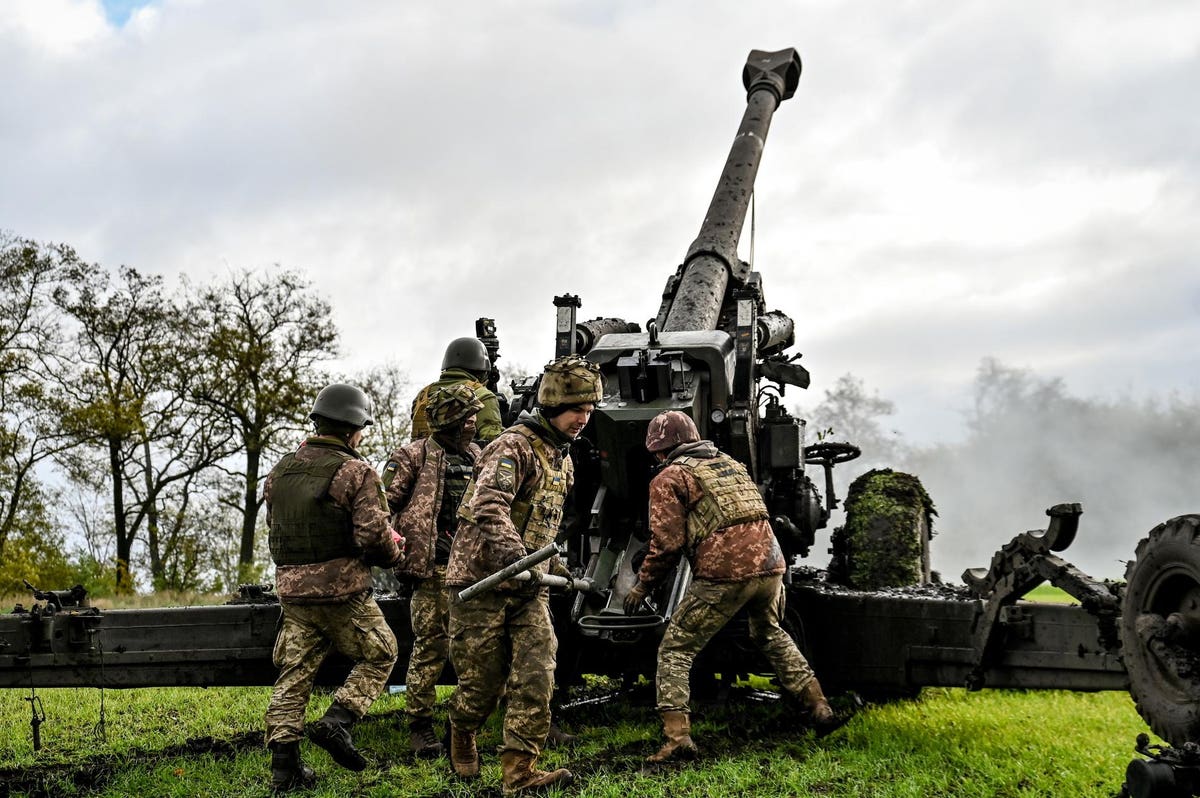Several reports suggest the Biden Administration is moving closer to providing Ukraine cluster munitions. Here’s why Ukraine wants them.
A cluster munition, or cluster bomb, is a weapon—an artillery shell or missile—containing multiple explosive submunitions. Opening up in midair, the submunitions deploy and then fall. Ideally, the fuses ignite above the ground, spreading carnage across a wide area.
As these are indiscriminate weapons, targeting an area rather than a specific target, they are not well liked. Even worse, the bomblets have a high failure rate, and the duds remain, like landmines, remaining a fatal threat to anybody who moves through the area later on.
Several countries, citing the threat posed to civilians, have banned these weapons, but they remain a relatively widely used components of modern arsenals. Neither the United States, Ukraine, nor Russia have banned these weapons, and both combatants in the Ukraine fight have employed cluster munitions.
Why Does Ukraine Want Cluster Munitions?
Cluster munitions are, arguably, force multipliers, designed to make trench systems into killing zones. Offering an interim stand-in for absent air support, America’s stockpile of 155mm and 105mm artillery-fired cluster munitions can help Ukraine on the battlefield, reducing the risk posed by Russian defenses that blanket the Ukrainian countryside.
For 155mm artillery systems, Each M483A1 shell carries 88 Dual-Purpose Improved Conventional Munitions (DPICM), and the newer M864 carries 72 bomblets. In essence, they convert one high-explosive shell into an instant barrage, lethal to soldiers and vehicles alike. Similar shells have been produced for the West’s arsenal of smaller 105mm guns.
Rather than employing DPICM munitions, Ukraine could use traditional high-explosive artillery ammunition to obtain similar results. But, to do that, the beleaguered country would need many more guns and a lot more ammunition. According to leaked intelligence assessments detailed in the Washington Post, these area affect munitions can replace whole barrages from massed artillery, offering “the same lethality as 10 155mm artillery rounds against group infantry.”
High explosive shells have a limited effect against dug-in infantry or in complex terrain. Cluster munitions, exploding from a range of different locations, are harder for soldiers to hide from as the submunitions are released directly overhead and submunition shrapnel blankets targets from multiple axes.
For a country that is facing serious manpower challenges, cluster munitions can make assaults easier. Though the munitions may leave unexploded ordinance in their wake, the risk to Ukrainian assault teams from unexploded submunitions is likely far less than the risk of clearing trench after trench of Russian defenders.
Tactical training is also factor. The UK Armed Forces are on track to have trained some 37,000 Ukrainian Army recruits, and, even though the UK has moved away from cluster munitions itself, UK infantry tactics, at least in 2019, still depend on help from cluster munitions. According to the Royal United Services Institute, “much of the evidence base for the effectiveness of UK warfighting capabilities has therefore been generated in a context where Britain wins tactical fights against enemy forces dispersed and dislocated by US cluster munitions strikes.” If UK is, in effect, generating Ukrainian soldiers that are trained in tactics that rely upon cluster munitions, then, logically, Ukraine will request those munitions as well.
As an area effect weapon, cluster munitions also may reduce the need for precise targeting, conserving Ukraine’s precious precision ammunition stockpiles. Reduced targeting needs may also conserve Ukraine’s targeting resources, allowing Ukraine’s unmanned observation drones to maintain greater standoff distances from Russia’s electronic warfare and counter-UAV systems.
While cluster munitions are a helpful battlefield supplement, standing in for absent aerial bombardment, they can also serve as an efficient replacement for Ukraine’s notoriously inaccurate Soviet-era BM-21 GRAD rocket systems. According to Human Rights Watch, a salvo of unguided GRAD rockets “can land anywhere within a rectangle of approximately 54,000 square meters,” unleashing “some 3,150 fragments” that can “kill or maim for a radius of twenty-eight meters”.
Finally, these weapons are available. Much of the cluster munitions that could be diverted to Ukraine are aging and will, in time, need to be demilitarized. As purchased and paid-for weapons, they’re effectively surplus gear that will cost a lot to remove from the arsenal. Ukraine is even requesting older and less useful cluster munitions, so the aging submunitions could be farmed out to Ukraine’s growing Air Force of unmanned aerial vehicles, helping the small drones hit heavier and better armored targets.
Barriers For Transfer Are Self-Imposed:
Cluster munitions are barbaric, imprecise weapons that persist on the battlefield.
Their use, particularly in urban areas or in places where civilians and military personnel are in close proximity, cause carnage. But Ukraine’s population is already suffering indiscriminate attack, and Eastern Ukraine’s countryside is already peppered with mines and other unexploded ordinance.
It would be great to avoid using these weapons. Transferring them will force U.S. politicians to do some hard work in rolling back guidelines that prevent U.S. transfer of weapons that have submunition dud rates of over 1%. But, even with a high “dud” rate, these weapons are likely to be useful in the fight that Ukraine is in.
Western fears that the use of weapons may somehow reduce Western support for the embattled country is overblown. Well-meaning people will complain, and overly-fastidious coalition partners may fret, but expediency makes a far stronger argument.
First, these weapons—if they are delivered—will likely only be employed in rural areas, away from civilian centers, in areas that are already contaminated by unexploded ordinance. Much of Russia’s fortifications are in the open countryside, built to prevent cross-country armored breakouts.
Second, if cluster munitions can reduce ammunition and training demand in Ukraine, they will, in turn, reduce pressure on Ukraine’s partners to reduce stockpiles and race to increase munitions production. And, by helping to reduce Ukraine’s battlefield losses, Western partners can reduce their exposure to large training cadres and limit the potential risk that Russia’s desperate leaders might be tempted to bring the war to the West by targeting Ukrainian trainees for bombings or other terrorist-type attacks.
And, finally, these weapons may simply help Ukraine win a few battles and materially change the situation on the ground. Victory is a strong influencer, and that, in itself, would go a long way to rally Western support for Ukraine, quieting the constant—and likely Russian-encouraged—fretting from some of Ukraine’s more squeamish Western partners.
Read the full article here




